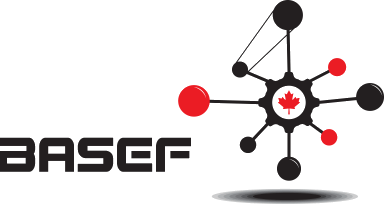
Project tip: Document Your Sources
The judges would like to remind you to document ALL resources that you use. This is incredibly important in the STEM fields. Remember, judges, are professional scientists, engineers, and educators (and more) with a deeply ingrained understanding of the importance of proper citations. DON’T LOOSE MARKS BECAUSE YOU FORGOT YOUR CITATIONS.
What Resources Are We Talking About
Tip: The more resources you have used, the better your project will be. Background research helps you find interesting things about your topic resulting in a really good question or potential problem for investigation.
For this post, we’re talking about information resources, not the physical materials and equipment you used. So sources of information created by someone else such as:
- Reference documents. Books, manuals, magazine articles, websites, and so on that helped you in developing your project but could be useful background documents. If you read it, then document it.
- Images and diagrams. And make sure they are properly captioned.
- Music and sound effects. Your project may use music or you may decide to use sound in your project video.
- People are excellent resources who can provide valuable advice. Keep track of them and give them credit in the acknowledgments section of your report. You may also want to write a brief note thanking them for their time.
- Data that came from an outside source. This is extremely important as data is the foundation of all STEM activities.
Why Do I Have To Document The Resources I Use?
You must always be aware of ethical concerns and legal requirements. But maybe we just need to call it being honest. If you borrow someone else’s ideas it may be illegal if it is protected Intellectual Property. Keep track of where the information came from, and if the idea came from another source, make sure you provide a reference.
Plagiarism
Plagiarism is the passing off of someone else’s ideas (or words) as your own. Examples are
- turning in someone else’s work as your own
- copying words/ideas from someone else without giving credit
- failing to put a quotation in quotation marks
- giving incorrect information about the source of a quotation
- changing words but copying the sentence structure of a source without giving credit
- copying so many words or ideas from a source that it makes up the majority of your work, whether you give credit or not
Most cases of plagiarism can be avoided by simply acknowledging that the material has been borrowed and providing the information necessary to find that source.
What About Images, Videos, and Music?
Using an image, video, or piece of music in your project without permission or providing an appropriate citation is plagiarism. Although very common today, it is illegal. These are examples of plagiarism:
- Copying media (images, videos, etc.) from other websites to paste into your own documents,
- Making a video using footage from others’ videos or using copyrighted music as part of the soundtrack,
- Performing another person’s copyrighted music.
If possible, use copyright-free images, audio, and video media. Today, a lot of media is available under a Creative Commons license that allows reuse under certain conditions. Make sure you understand the usage rights and then use, and reference, in an appropriate manner.
Preparing a Reference List
Tip: The APA (American Psychological Association) citation format is preferred for Senior projects (Lab, 2021). Note that the references and the bibliography in this post, use the APA format.
A reference list is an alphabetical list of all the resources you used to complete your project. Only resources you quote or take ideas from are in this list. You can easily create this list from your notes. Besides your main reference list you may also need to include additional lists for:
1) Background Reading,
2) Acknowledgements,
3) List of Figures.
For general information related to citations check out (“Cite a Website in APA, Chicago, Harvard, or MLA style – Cite This For Me”, 2021).
Resources
Much of this information has been taken from two other BASEF publications; the Science Success: Student Workbook (Simmons, 2019), and the Patent Overview for Science Fair Participants (Ross, 2019). Please review them as they contain more information than this short post.
For detailed information on the APA citation format see (Lab, 2021)
I used a website Cite This For me (“Cite a Website in APA, Chicago, Harvard, or MLA style – Cite This For Me”, 2021) to format the references in this post.
Bibliography
Cite a Website in APA, Chicago, Harvard, or MLA style – Cite This For Me. (2021). Retrieved 23 February 2021, from http://www.citethisforme.com
Lab, P. (2021). APA Style Introduction // Purdue Writing Lab. Retrieved 23 February 2021, from https://owl.purdue.edu/owl/research_and_citation/apa_style/apa_style_introduction.html
Ross, A. (2019). Patent Overview for Science Fair Participants [Ebook] (1st ed.). Hamilton: Bay Area Science and Engineering Fair. Retrieved 23 February 2021, from https://www.basef.ca/wp-content/uploads/Publications/Patent_Documents/Patent-Overview.pdf
Simmons, N. (2019). Science Success: Student Workbook (3rd ed.). Hamilton: Bay Area Science and Engineering Fair. Retrieved 23 February 2021, from https://www.basef.ca/wp-content/uploads/Publications/Science_Success/Science-Success-Student-Workbook.pdf




